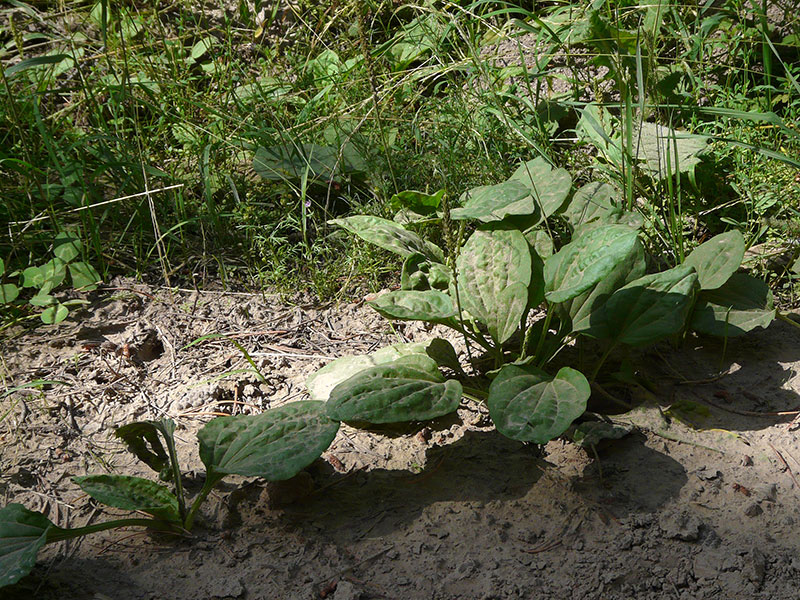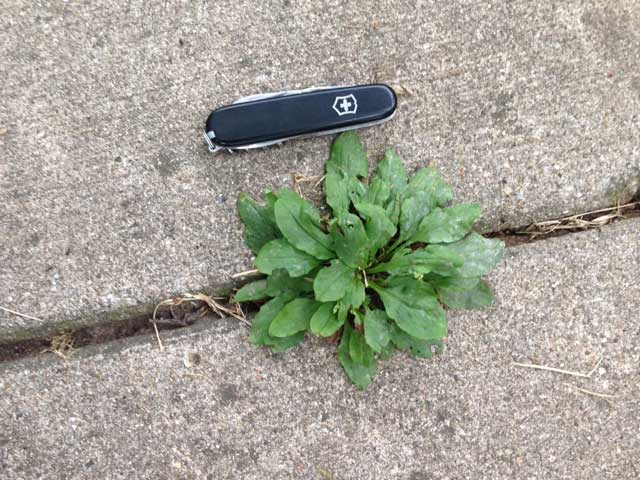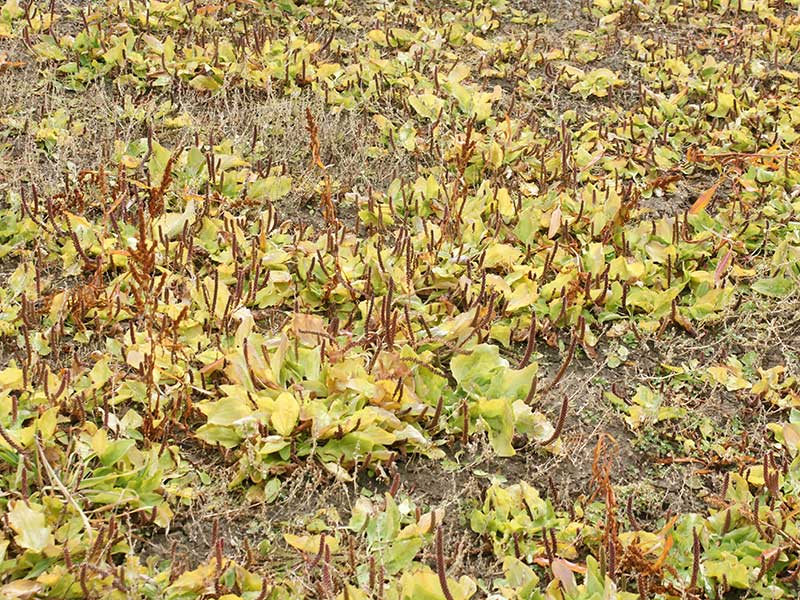Plantago major / broadleaf plantain
Also known as: white man’s foot, greater plantain, cart track plant, dooryard plantain, roadweed, plantago
Broadleaf plantain is a really ugly plant. Perhaps not so ugly as prickly lettuce, but ugly nevertheless. It grows along all the well-trodden pathways in the Valley and surrounding mountains, and is generally covered with dust. It is fine with highly compacted soil. It will even quite happily grow in your lawn and be difficult to get rid of. When it flowers, the inflorescence is even uglier than the leaves. It’s a shame, in a way, that a whole botanical family with some truly lovely flowers is named for it.
An apology is in order. In October, on the retreating shoreline at Palisades Reservoir, there is a lot of Plantago. It’s bright yellow and the seed spikes are dark red/brown. And, well, it’s actually pretty. See the gallery photo. But maybe not pretty enough for a full-sized font.
The seeds of this and other Plantagos were brought to North America initially by the puritans, perhaps as contamination in hay, but perhaps because of medicinal uses (see below). Since them, it has followed the invaders everywhere, gaining the moniker in some Native American languages of “white man’s foot”. Clearly, “cart track plant” and “dooryard plantain” refer to the same phenomenon.
With that preamble, broadleaf plantain is a rosette plant with large, oval leaves. The leaves have petioles almost as long as the blades. These allow all the leaves to be fully exposed to the light. The veins are quite prominent. It grows where people and horses have moved the seeds, so is generally exposed along sides of paths and roads. Break a leaf and it is slimy. When the seeds get wet, the outer coat swells up and gets slimy.
Plantago flowers are teeny, green-ish brown, and grow on a tall spike. In really good conditions, these can get up to 2 feet tall. You won’t be tempted to cut them and put them in a vase. The flowers are wind pollinated and the seeds can hang on to the spike for a long time, even over winter.
On the other hand, like most of the plants I least like, this one is not without redeeming value. Wikipedia has a good treatment of this. From that page: “Plantago major is one of the most abundant and widely distributed medicinal crops in the world. A poultice of the leaves can be applied to wounds, stings, and sores in order to facilitate healing and prevent infection. The active chemical constituents are aucubin (an anti-microbial agent), allantoin (which stimulates cellular growth and tissue regeneration), and mucilage (which reduces pain and discomfort). Plantain has astringent properties, and a tea made from the leaves can be ingested to treat diarrhea and soothe raw internal membranes. [It is also] a very nutritious leaf vegetable that is high in calcium and vitamins A, C, and K. The young, tender leaves can be eaten raw, and the older, stringier leaves can be boiled in stews and eaten.
But remember those horses… wash everything first.
Oh… one last thing. The plantains are totally NOT the source of the banana-like fruit. Not even a relative.
| Color | |
|---|---|
| Family | |
| Blossom size | |
| Inflorescence size | |
| Inflorescence type | |
| When? | |
| Where? |



